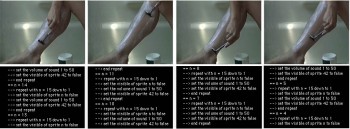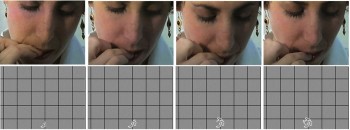“A stockhouse of gestures, routines and habits”, Natalie Bookchin’s classic CD-ROM Databank Of The Everyday addresses the death of photography in the electronic age, fusing the computer database with a stock photography catalogue. Manifesto in style, its subject is the everyday use of computers in our culture – the storage, transmission and dissemination of massive bodies of information – and the impact of such usage on the human body. The computer loop represents the body’s desires, habits and compulsions.
—Center of Contemporary Photography
Databank of the everyday
CD ROM
1996


The Databank of the Everyday suggests that the loop can be a new narrative form appropriate for the computer age. In her ironic manifesto which parodies the avant-garde manifestos from the earlier part of the century, Bookchin reminds us that the loop gave birth not only to cinema but also to computer programming. Programming involves altering the linear flow of data through control structures, such as “if/then” and “repeat/while”; the loop is the most elementary of these control structures.[….]
Bookchin also also explores alternatives to cinematic montage, in her case replacing its traditional sequential mode with a spatial one. Ford’s assembly line relied on the separation of the production process into a set of repetitive, sequential, and simple activities. The same principle made computer programming possible: a computer program breaks a tasks into a series of elemental operations to be executed one at a time.
—Lev Manovich, What is Digital Cinema